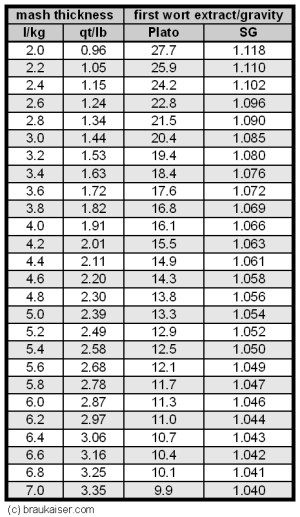What are good efficiencies for a standard mash?
It's my opinion, that while Spending too much effort chasing "high" efficiency is a bit silly, there is a point at which your efficiency being too low - indicates that you are doing something wrong that might show up as a brewing quality issue later down the track. Well designed systems that do what they are supposed to do, and well performed brewing - Give good efficiencies. Bad efficiencies mean something is not right.
So, talking about efficiency measured in the kettle, for a brew with an intended OG of about 1.050... I think that a properly designed system of the following types "should" be getting
or exceeding roughly the following efficiencies... A bit down is of course no issue, but
very much less and I think you are seeing an indication of a system design or a technique issue.
Standard (full volume no sparge) BIAB - 70-75%
Batch Sparge with just one run-off (ie, no sparge) - 70-75%
Batch Sparge with 2 equal run-offs - 75+%
Continuous Sparge (fly/flood) - 80+%
To be brutally honest - if you are getting a whole heap less than that. You're doing something wrong or you have built a lousy system. Newer brewers of course being excepted... I don't know why, but experience seems to magically add a bunch of efficiency points too.
And of course, as long as you aren't so low that it indicates a problem, then consistency is the more important thing. Still, why looking to improve your process and your efficiency seems to be considered somehow immoral by some people has me buggered. Consistent is good... Surely consistently high is even better?





